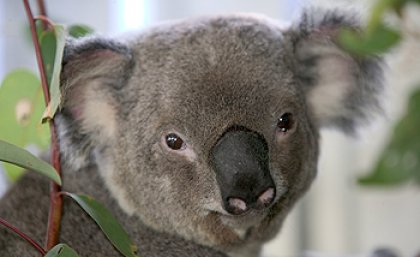
Researchers from The University of Queensland and the University of Vienna have found that the bellowing sound male koalas make can communicate their size to a potential mate.
The new research by Dr William Ellis from UQ’s School of Biological Sciences and Dr Benjamin Charlton from the University of Vienna was published in The Journal of Experimental Biology this week.
The international team found that male koalas have a particular vocal anatomy that maximises the resonance of their bellows, which gives individuals a deep, low-frequency call – making them sound big, tough, and attractive.
According to Dr Ellis, co-author of the research paper, the finding is an exciting breakthrough in understanding koalas' sexual selection.
“This confirms our impression that intense sexual selection in the koala operates despite their seemingly solitary nature,” Dr Ellis said.
“Koalas are an excellent model for investigating parameters of mate choice and evolutionary ecology, as well as being an iconic, if vanishing, species,” he said.
Bigger male koalas have higher reproductive outputs and females may particularly select larger males to increase the chances of producing larger and more competitive offspring.
In addition, larger males are also better at defending good territories.
This is the first time that a permanently-descended larynx has been discovered in a marsupial. Previously, the descended larynx has only been found in humans and red deer.
A descended larynx increases the spectrum of vocalisations that can be produced, including those in a deeper range.
The research team will be working on a project to determine the exact function of bellows in koala ecology.
For more information on koalas, please visit UQ Koala Ecology Group.
Media: Dr William Ellis, +61 (0)7 3365 2510, w.ellis@uq.edu.au or Tracey Franchi (School of Biological Sciences; 07 3365 4831 or t.franchi@uq.edu.au




